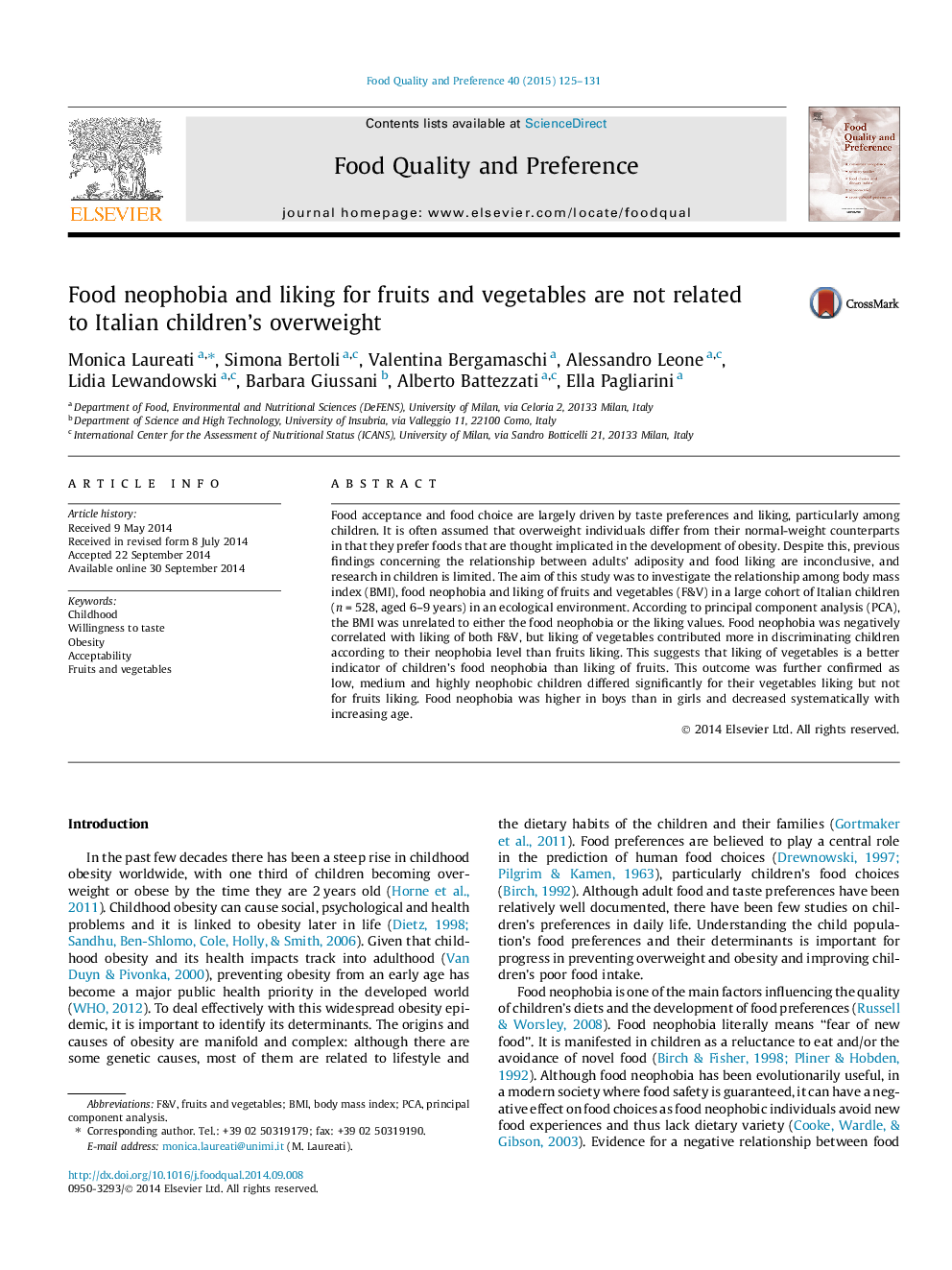| Article ID | Journal | Published Year | Pages | File Type |
|---|---|---|---|---|
| 4317071 | Food Quality and Preference | 2015 | 7 Pages |
Food acceptance and food choice are largely driven by taste preferences and liking, particularly among children. It is often assumed that overweight individuals differ from their normal-weight counterparts in that they prefer foods that are thought implicated in the development of obesity. Despite this, previous findings concerning the relationship between adults’ adiposity and food liking are inconclusive, and research in children is limited. The aim of this study was to investigate the relationship among body mass index (BMI), food neophobia and liking of fruits and vegetables (F&V) in a large cohort of Italian children (n = 528, aged 6–9 years) in an ecological environment. According to principal component analysis (PCA), the BMI was unrelated to either the food neophobia or the liking values. Food neophobia was negatively correlated with liking of both F&V, but liking of vegetables contributed more in discriminating children according to their neophobia level than fruits liking. This suggests that liking of vegetables is a better indicator of children’s food neophobia than liking of fruits. This outcome was further confirmed as low, medium and highly neophobic children differed significantly for their vegetables liking but not for fruits liking. Food neophobia was higher in boys than in girls and decreased systematically with increasing age.
•We evaluated the relationship among childhood overweight, food neophobia and liking.•BMI was unrelated to either food neophobia or food liking.•Food neophobia was negatively correlated with liking of fruits and vegetables.•Liking of vegetables was the best indicator of children’s food neophobia.•Food neophobia was higher in boys than in girls and decreased with increasing age.
